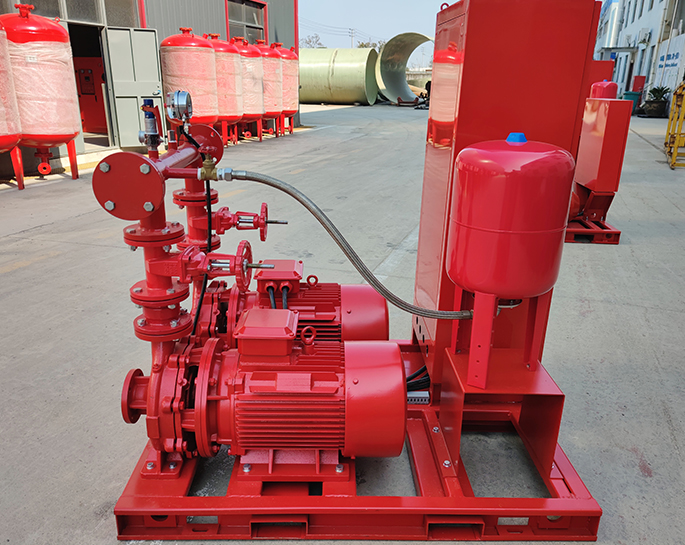What is the control and inspection method of the fire pump
Mar 09, 2023
Share:
The control and inspection of the fire pump is typically done through a combination of visual inspections, testing, and maintenance. Visual inspections should be done to check for visible signs of damage to the pump and its components, and to make sure that the pump is connected properly and securely. Testing should be done to ensure that the pump is functioning correctly, and that the pressure is adequate for the system requirements. Maintenance should be done to ensure that the pump is running properly and that the system is free of any obstructions or blockages.
1. Periodic Inspection: This type of inspection involves checking the fire pump regularly to ensure that it is in good working condition. This includes checking the electrical connections, fuel lines, and other components to make sure they are in proper working order.
2. Pressure Testing: Pressure testing is a necessary step for any fire pump to ensure that it will be able to deliver the required amount of water during an emergency situation. During this test, the pump is connected to a water supply and pressure gauge, and the system is monitored while the pump is running to ensure that it is delivering the correct amount of pressure.
3. Performance Testing: Performance testing is a more comprehensive test that involves running the fire pump at various speeds and pressures to make sure it is able to deliver the required amount of water. This test is usually done in a laboratory setting, and it is important to make sure the results are accurate.
4. Visual Inspection: Visual inspections are important to ensure that the fire pump is in good working order. This includes checking that all parts are in good condition, that all connections are secure, and that there are no signs of wear or damage.
5. Control:
The fire pump should be operated only when necessary, and should be turned off when not in use. The pump should also be monitored to ensure that it is operating at the correct pressure and flow. Additionally, the system should be checked to make sure that the valves and other components are working properly.

1. Periodic Inspection: This type of inspection involves checking the fire pump regularly to ensure that it is in good working condition. This includes checking the electrical connections, fuel lines, and other components to make sure they are in proper working order.
2. Pressure Testing: Pressure testing is a necessary step for any fire pump to ensure that it will be able to deliver the required amount of water during an emergency situation. During this test, the pump is connected to a water supply and pressure gauge, and the system is monitored while the pump is running to ensure that it is delivering the correct amount of pressure.
3. Performance Testing: Performance testing is a more comprehensive test that involves running the fire pump at various speeds and pressures to make sure it is able to deliver the required amount of water. This test is usually done in a laboratory setting, and it is important to make sure the results are accurate.
4. Visual Inspection: Visual inspections are important to ensure that the fire pump is in good working order. This includes checking that all parts are in good condition, that all connections are secure, and that there are no signs of wear or damage.
5. Control:
The fire pump should be operated only when necessary, and should be turned off when not in use. The pump should also be monitored to ensure that it is operating at the correct pressure and flow. Additionally, the system should be checked to make sure that the valves and other components are working properly.







